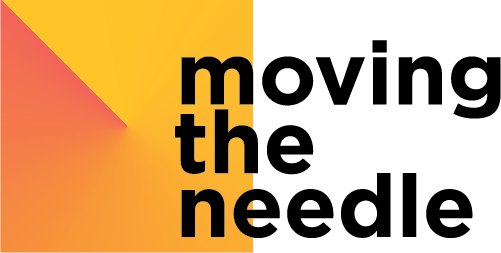Eight tips to Improving Accountability with Weekly OKR Check-ins
Accountability Misfire
Photo by Perry Grone
You find yourself sitting at your desk, scratching your head. What is going on? You thought you were clear and fair. You repeated it so many times. How is it possible that your teams still don’t do what you expect of them? You gave them full autonomy to deliver their respective outcomes (read: the KRs of OKRs). The psychological safety is high and the ideal behavior is modelled from the top down with collaborative senior management on board. All of the ingredients they need to flourish, they have, right? So, what on earth is going on? How can you increase accountability within your teams and encourage accountability?
Accountability. What is that, even? Well, a literal definition is: “responsibility to someone or for some activity”
It is this particular complaint that pops up in my inbox on a regular basis from all types of businesses, operating in all sorts of environments and industries from start-ups and scale-ups, to large enterprises; no business operation is spared from the disappointments of unmet accountability expectations, even in companies where OKRs and Agile are fully adopted. So, what can you do to make your teams accountable? In this article, let’s take a look at companies that have already started with OKRs and what can be learned from their experiences.
OKR Check-ins to the Rescue
Unaccountability is a symptom of a greater issue, and one that has a relatively easy-to-administer prescription. The problem: the expectation of outcomes to be delivered on a “silent” schedule; that staff will take the initiative to read your mind and provide regular updates (that also address their concerns/roadblocks) exactly when you want/need the information. The treatment: Regularly scheduled OKR Check-ins.
OKRs simply won’t work without hosting this vital step. In order to increase accountability, you need to create a rhythm of regular and frequent team meetings. OKR check-ins are usually held at the beginning of the week, every week (Monday morning is a great time) and last ideally 15 to 30 minutes max. In the OKR world, we call this a weekly cadence and it is very important for a successful OKR roll-out. Without further ado, here are eight tips to improve team accountability with the help of OKR check-ins.
#1 Repeat the Purpose
“What’s the point? Why exactly are we doing this activity?” People need to understand how their work is related to the bigger picture: the mission, vision and strategy of the company. OKRs are business goals that contribute effectively to these factors. Good OKRs will help to communicate the purpose of the team’s work. It answers why it is important that we do this work, this project, this initiative and how it will contribute. During the weekly check-ins, make sure you not only communicate OKRs but also briefly mention the connection to the overall mission, vision and strategy. If you repeat that message every week, accountability will increase; staff will be able to see how their work connects to the web of others’ work.
#2 Cross-team and Departmental Check-ins
Photo by Michael Heuser
Do you only do team-level OKR check-ins? Then you might want to consider doing cross-team or departmental level OKR Check-ins. If you have a large product team (e.g multiple software teams), then the OKR check-ins can become very powerful in the alignment of OKR initiatives. If all teams see their dependencies on other teams on a weekly basis, it will make them more accountable to one another. In fact, in most organizations I coach, the “team level” OKR check-in is often the whole product development department. In start-ups, the “team” check-in is the whole company. Make sure you implement OKR check-ins at the right level. If you need help, schedule a free call with me to discuss.
#3 Influence is the Compass
For OKRs to be most effective, they team must be able to have influence their delivery; influence they can see and feel. This is where things go wrong most of the time. How can you hold a team or someone accountable if they have no to little influence over the results?
I work often with software product development teams where OKRs are set on a departmental level. Let’s say, for example, that one of their key results is to increase Net Promoter Score (NPS). In all likelihood, the teams will probably have a hard time figuring out how to move that needle. That is because NPS is not influenceable by most (software) teams. It requires collaboration with sales, marketing and customer support departments as well to drive that number up. Hence, the problem of setting OKRs in “functional” silos. Furthermore, NPS could be seasonal or cyclical. If you are selling ice cream in the winter, you probably will not get a high NPS score. (For alternatives to NPS, consider these metrics instead).
Before restructuring your whole organization to drive your OKRs (actually you should and this will be a topic we will cover in the future), you can also try to help the team in defining OKRs that are directly influenceable by them.
#4 Commitments on Initiatives
Do you have designated OKR or KR owners? If this remains unclear, people will feel less obliged to carry out their individual tasks. If the team is responsible for an OKR, then make sure you assign someone from the team (e.g. team leader, senior person) to one or more KRs. Who is responsible for what should be communicated at every OKR check-in. Let the OKR or KR owner set the confidence levels every week during the check-in and ask him or her to give a short description of why they gave that score followed by a healthy conversation about the reasoning why.
#5 Envision the End Game
A popular tool of many athletes prior to a competition is to envision themselves “from start to finish” winning, imagining what they will do and when. Visualisation is a very important factor in encouraging accountability; how do you paint a picture of the desired end result? When are the key deadlines, what needs to be handed-off by those deadlines and why is it important for them to be produced by that time? What is the domino effect of each team member? Visualisation can come in many forms but you may choose to use a visualisation map, board, or diagram divided into quarterly months, with the tasks of each team marked out (which has the added benefit of everyone being clear with who is working on what deliverable). Based on the confidence levels that are shared at the weekly check-ins, this type of document can be edited, updated or adjusted and referred to on a daily basis.
#6 Monitor Progress
Speaking of visualisations, you can also refer back to history on previous results during your weekly OKR check-in meeting. Many teams use charts to display historical data. Keeping track of progress towards the end result not only ensures that you stay on-track, but has the added benefit of generating psychological satisfaction, happiness and motivation to continue.
Be careful, progress is a double edged sword. It can also turn into a drawback. If you track progress on your OKRs and you don’t see positive results, you can expect a decrease in motivation. “I/We have worked so hard and we have nothing to show for it”. If you find yourself in this position, there is a chance that you are using the wrong metrics in your KRs. Are you waiting for a whole OKR cycle to then learn from it? Or do you change/adjust your KRs regularly? There is a trade-off when it comes to learning opportunities versus showing progression…the choice is yours.
Somalia national team talks with coach Livingstone Mbabazi. Source: commons.wikimedia.org
#7 Coach your People
According to an article posted on Gallup.com about promoting accountability, 47% of workers received feedback from their manager “a few times or less” in the past year, and only 26% of employees strongly agree that the feedback they receive helps them do their work better. A company’s accountability problem may actually be a coaching problem in disguise. So during the Weekly OKR check-in, offer your help to remove roadblocks, obstacles and be a resource to your teams. Sometimes people really don’t know what to do; this is an opportunity to lead, teach them, guide them or offer possibilities/advice. This is where situational leadership comes in and your role as a leader is to find the right balance.
#8 Consequences
The OKR check-in is foremost a conversational tool. It helps to make results and consequences visible. Results and consequences don’t have to be negative. In fact, when you observe positive results and their subsequent consequences, then it is equally important to mention and discuss these, too. Even better is to celebrate them! Use the OKR check-in meeting to enjoy results and to make consequences visible. Of course, sometimes a problem could lie with the attitude or behavior of a single team member, and if this is the case, I recommend reviewing an article from the Harvard Business Review titled “Do you Understand What Accountability Really Means?” for a nudge in the right direction in dealing with this type of situation.
Recap
Weekly repetition of the mission, vision and strategy
Cross-team and/or departmental check-ins
OKRs must be influenceable by the team
Discuss commitments on initiatives every week
Visualise the end result
Coach your people
Make results and consequences visible.
Could You Use Some Help?
Schedule a free 30-minute chat with me to explore how OKR check-ins can help you achieve remarkable results.



